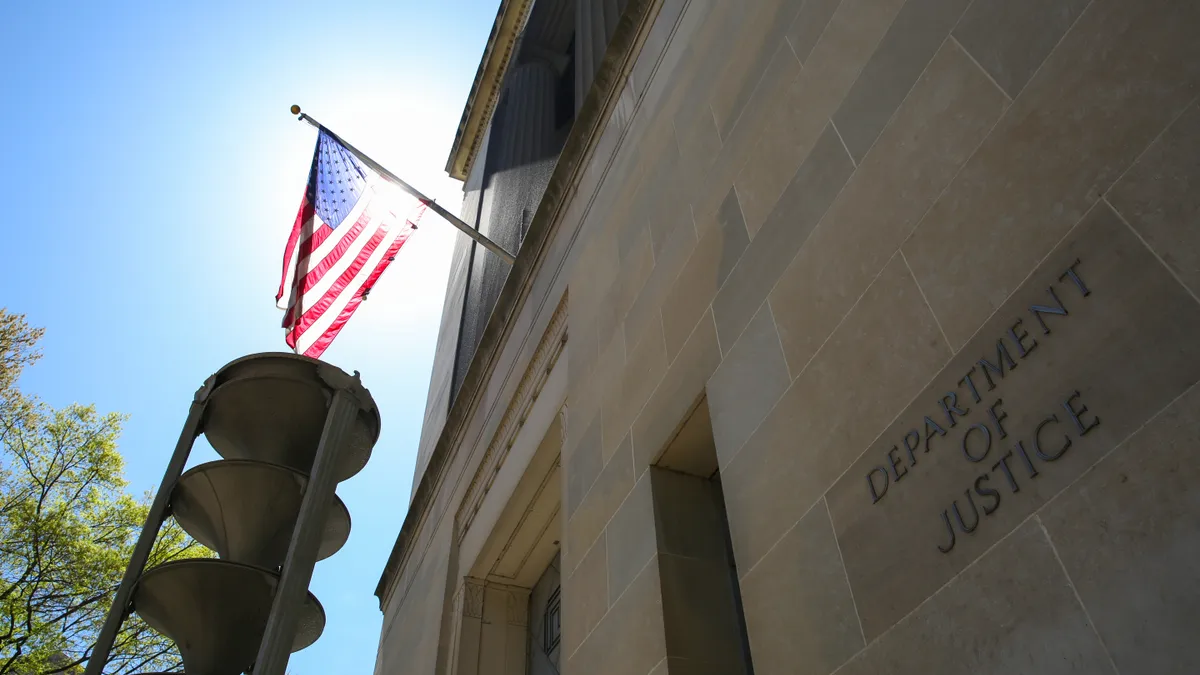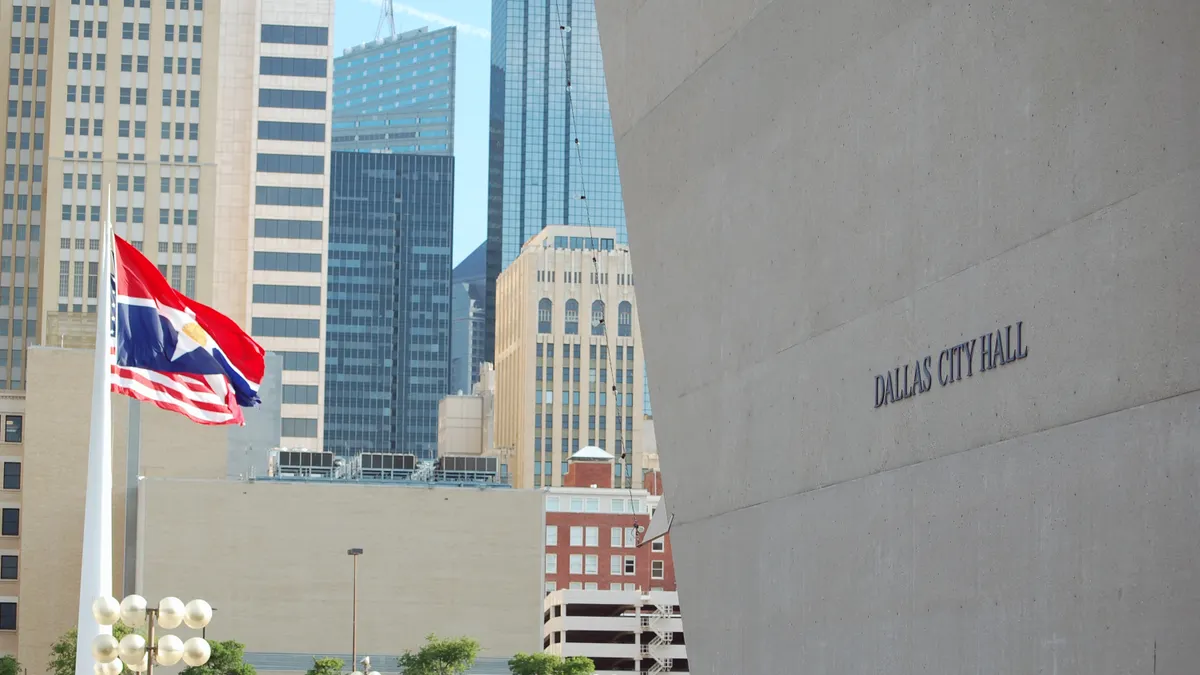In August 2016, Alan Howze became the first-ever Chief Knowledge Officer for the unified government of Wyandotte County and Kansas City, KS.
A native of Arlington County, VA, Howze worked for IBM in the smart cities field for about a decade before transferring to Kansas. At the unified government, Howze is responsible for the management of its IT systems, service requesting system 311 and geospatial analytics, which analyzes data to solve problems for its residents. His focus has also included a new app for local residents to report issues and pay taxes, as well as a project to connect the city with more fiber, seven years after Kansas City, KS was named the first Google Fiber city.
Howze sat down with Smart Cities Dive to discuss innovation and transparency in local government, the city's work on adding more fiber connectivity and how to make government work more efficiently for residents.
This interview has been edited for length and clarity.
SMART CITIES DIVE: What does an average day look like for you as Chief Knowledge Officer?
HOWZE: There's three main areas. [So], the functional management of those core areas — IT, GIS and 311 — and we stood up a performance and innovation team that does project management and data analytics. The other part of it is collaboration across departments. My role is to bring departments together to facilitate conversations. What you often find is there are shared needs for payment systems or records management systems or fiber connectivity that cross departmental boundaries.
Rather than each department addressing those as a series of individual projects, we can create an enterprise solution or approach to helping departments better meet their missions. Then the third area is external engagement, which is the opportunity to work with Kansas City, MO, to work with Johnson County, to work with surrounding localities on areas of shared interests. What can we learn from each other, how can we be part of the regional and national conversation around local government and smarter cities?
Was it difficult to break down the silos in the government departments?
HOWZE: I think there's been a broad willingness to engage collaboratively to find solutions. I think one of the frustrations that departments often have, to use software as an example, they might do a software upgrade and implementation every three or five years and not with enough frequency to become proficient at how it's done. It becomes a very fraught and high-risk exercise for departments to take on that themselves, and what you often find is they aren't getting the maximum value from the investments in the software and the technology because of gaps in the project management and execution and implementation of those projects.
By creating this project management team that works with departments, we can help them avoid the repeatable mistakes and get the value they know is out there from these investments in technology, but actually see that and be able to achieve that value. We've had a lot of willing partners in that.
What has innovation looked like?
HOWZE: One example is a mobile app that we launched in fall last year, through partnering with a local Kansas City company called PayIt, an integrated payment and 311 app. Rather than having two different applications, whether you want to submit a pothole complaint versus you want to go and pay your real estate tax bill. We've put them on the same platform and created a mobile app that's also the same as your web-based experience. It's a simplified process, it's intuitive, it takes people through what they need to do, and it links back to our systems of record on tax and 311 so that we've eliminated the need for hand-entering online transactions.
Another one is we're putting in place a fiber network. Connectivity is core to the ability to use cloud-based services. If you don't have a network, you can't use it. So we will largely have built at the end of this month a 40-mile fiber ring around the city that will connect up police departments and other municipal buildings as well as provide conduit space for private sector access to bring high-speed connectivity to the commercial corridors that haven't traditionally had it.
Kansas City, KS was the first Google Fiber city in the country, and there has been a lot of benefits to the build-out of fiber and accessibility of fiber to residents. But it wasn't designed as a business-class service. So what you end up with in older neighborhoods is you have these commercial corridors where, say you had an insurance business and you wanted gigabit-level service, it's impossible to get. It's simply not available in the marketplace.
We're breaking that chicken-and-egg cycle because the telecoms won't make that investment if they don't see that initial customer base there to support it, but if you don't have the fiber access then you won't get businesses to locate there. We're trying to cut through that and build out the conduit so there's initial access in some of these corridors, and then if businesses want to they can receive commercial-level services.
What kind of lessons do you learn from each other and how do you go about collaborating?
HOWZE: I'll give you two examples. One is the fiber project. The partner we were working with on that is one that we were introduced to by Kansas City, MO, Unite Private Networks. They're based in Kansas City, [MO], so simply the fact of being engaged with and having conversations with and understanding what other jurisdictions are doing, because 90% of the problems are very similar, that's one. Another one is around blight and blighted properties. Kansas City, MO and Kansas City, KS both have a challenge of thousands of abandoned and blighted properties.
Trying to work together to understand, to put the data onto a shared platform and work with a local university, the University of Missouri at Kansas City, to do that and to look at the distribution of those properties, what lessons we can begin to draw from understanding that this is not a Kansas City, KS problem or a Kansas City, MO problem, it's really a regional problem. It follows some of the red line contours and other historical markers, and some of the same solutions can apply in both places as well. So we can learn how we are approaching blight and neighborhood redevelopment can inform how Kansas City, MO is doing it as well.
How do public-private partnerships (P3s) feed into that?
HOWZE: We rely on the private sector as the tools in which to execute the vision. The fiber network is being done in conjunction with a P3; the mobile app was through a local Kansas City company; we're working with another Kansas City-based company, mySidewalk, as they do a mapping and data visualization platform. We rely heavily on the private sector partners, and really do look at them as partners.
They're helping us think through these problems and challenges and helping us to identify from their own experiences in working with other communities some of those best practices. That can be everything from as mundane as where we should put hand holes for fiber so we can access it so it's close to existing public buildings, to understanding how other communities are using data visualization to think about fire safety and structure safety. We really look to our private sector partners to help with that.
Looking forward the next five years, what do you want to get done in terms of innovation?
HOWZE: I think the digital service transformation is really where it's at in terms of making an appreciable difference in people's lives and in making government more efficient in how it delivers those services. That's easy to say and hard to do. So we're looking at what the options are and how we can begin to digitize all kinds of different services.
Part of that is electronic signatures, part of that is forms-based stuff, part of that is the platform on which we have our web presence, and part of that is the integration between the front-end systems and the systems of record that drive taxes and that kind of stuff. Looking at all those pieces in motion simultaneously, how do we position ourselves to begin to deliver a much better digital service, so people want to use those web tools and delivers significant efficient value to the organization and makes us better stewards of tax dollars.


















